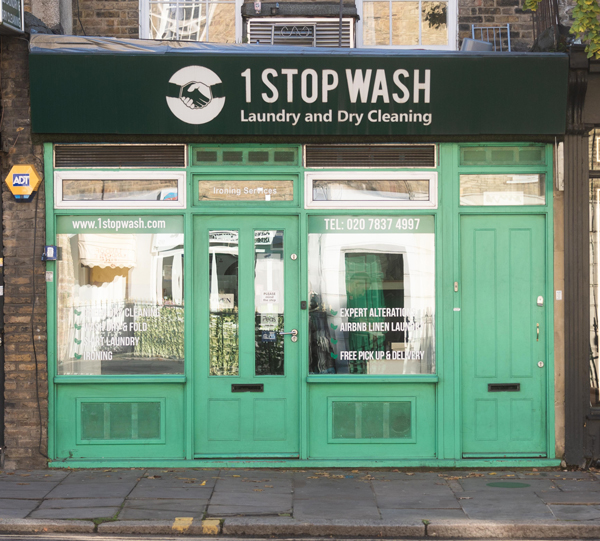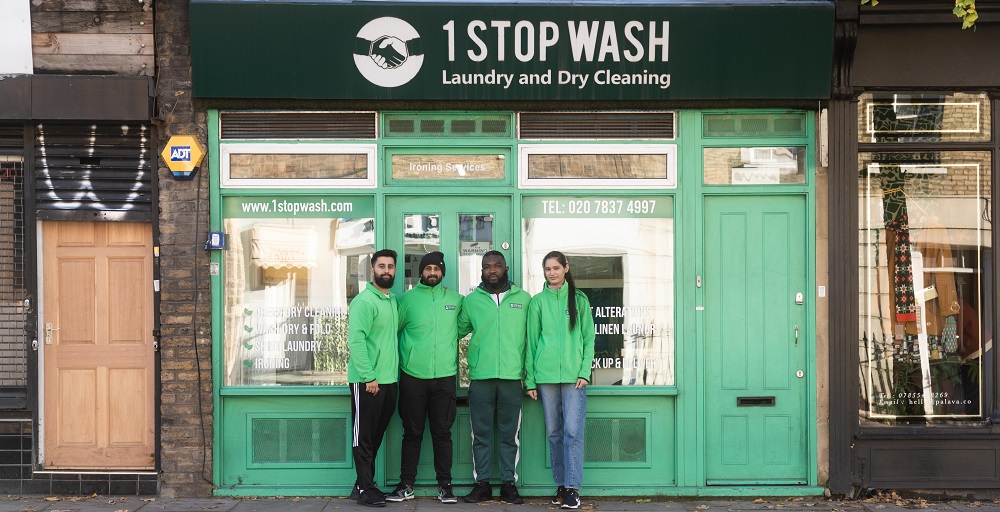
Introduction: Embracing Eco-Friendly Practices in Dry Cleaning
Dry cleaning, a service integral to our daily lives, has a rich history that dates back to ancient times. Initially, it involved simple methods like using water and natural solvents to clean fabrics. However, with the industrial revolution, the industry saw a significant shift. The introduction of chemical solvents, particularly perchloroethylene (perc), revolutionized the process, offering effective cleaning but at an environmental cost.
Today, we stand at a pivotal moment in the history of dry cleaning. As awareness of environmental to garment care. This movement is redefining the industry, replacing harmful chemicals with greener alternatives that are kinder to our planet and safer for both consumers and workers.
This introduction sets the stage for a deeper exploration into the evolution of dry cleaning. We will delve into the innovative eco-friendly practices that are replacing traditional methods, the benefits they bring, and the challenges faced during this transition. Join us as we uncover the journey of dry cleaning from its chemical-laden past to a greener, more sustainable future, marking a significant step in our collective environmental responsibility.
The journey of dry cleaning is a fascinating tale of innovation and adaptation. From its humble beginnings to the sophisticated processes we see today, the industry has undergone significant transformations.
The Origins and Evolution of Dry Cleaning
Early Methods of Dry Cleaning
The origins of dry cleaning date back to ancient times, with records indicating that early civilizations used methods like beating and airing out clothes to remove dirt. However, it wasn’t until the 19th century that modern dry cleaning began to take shape. The discovery of using turpentine and other solvents to clean fabrics without watermarked a revolutionary step. This method was particularly useful for delicate fabrics that could be damaged by traditional washing.
Introduction of Chemical Solvents
The real game-changer in dry cleaning came with the introduction of chemical solvents. In the early 20th century, cleaners began using petroleum-based solvents like gasoline and kerosene. These were effective but posed significant fire and health risks. The search for safer alternatives led to the adoption of perchloroethylene (perc), a chlorinated solvent, in the 1930s. Perc became the industry standard due to its efficiency in removing stains and its relatively lower flammability.
Key Milestones in Dry Cleaning Evolution
Over the years, dry cleaning has seen several key milestones. The development of synthetic solvents, more sophisticated machinery, and computer-controlled cleaning and drying cycles have all contributed to the industry’s growth. However, the most significant milestone in recent years has been the shift towards eco-friendly practices. Concerns over the environmental and health impacts of traditional solvents have driven the industry to explore greener alternatives. This includes the use of liquid carbon dioxide, silicon-based cleaners, and wet cleaning methods that use water in a more controlled and gentle manner.
This evolution reflects the industry’s ability to adapt and innovate in response to changing needs and concerns. As we delve further into the history and development of dry cleaning, it becomes clear that this industry is not just about cleaning clothes; it’s about a continuous journey towards efficiency, safety, and sustainability.
Comparison of Cleaning Effectiveness
When comparing the cleaning effectiveness, green methods have shown promising results. While traditional solvents are known for their strong cleaning power, eco-friendly alternatives have proven to be equally effective for most fabrics and stains. Moreover, they are often gentler on clothing, extending the life of garments.
The transition to eco-friendly practices in dry cleaning is not just a trend but a necessary evolution. As more businesses adopt these practices, the industry is moving towards a more sustainable future, balancing the need for effective cleaning with environmental responsibility and health safety. This green wave is reshaping the industry, offering a cleaner, safer alternative for both the planet and its inhabitants.
The Impact of Chemical Solvents
The Impact of Chemical Solvents in Dry Cleaning
The dry cleaning industry has long relied on chemical solvents, with perchloroethylene (perc) being the most prominent. However, the environmental and health impacts of these chemicals have raised significant concerns.
Common Chemical Solvents and Their Usage
Perc, a chlorinated solvent, has been the backbone of the dry cleaning industry for decades. Its effectiveness in removing stains and grease made it a popular choice. However, other solvents like trichloroethylene and petroleum-based solvents have also been used, each with its own set of advantages and drawbacks.
Environmental and Health Impacts
The use of these chemical solvents has not been without consequences. Perc, for instance, is a volatile organic compound (VOC) that contributes to air pollution and can contaminate groundwater. It’s also classified as a likely human carcinogen, posing health risks to workers in dry cleaning facilities and potentially to customers through residual chemicals on cleaned garments.
The environmental impact extends beyond air and water pollution. The disposal of solvent-contaminated waste and packaging materials contributes to the overall environmental footprint of traditional dry cleaning practices.
Regulatory Changes and Industry Response
In response to these concerns, regulatory bodies worldwide have started implementing stricter controls on the use of hazardous solvents in dry cleaning. This includes limiting emissions, mandating safer handling and disposal practices, and in some cases, phasing out the use of perc altogether.
The industry’s response has been a gradual shift towards more environmentally friendly alternatives. This includes the adoption of greener solvents, improved containment and recovery systems, and alternative cleaning methods like wet cleaning. These changes reflect a growing recognition within the industry of the need to balance effective cleaning with environmental stewardship and health safety.
As regulations tighten and awareness grows, the dry cleaning industry is poised for further transformation, moving away from traditional chemical solvents towards more sustainable practices.
The Green Wave: Shift to Eco-Friendly Practices
The dry cleaning industry is experiencing a significant shift towards eco-friendly practices, driven by environmental concerns and advancements in technology.
Introduction of Eco-Friendly Solvents and Technologies
Innovative eco-friendly solvents are replacing traditional chemical solvents. These include liquid carbon dioxide, silicone-based solvents, and hydrocarbon solutions. These alternatives are not only less toxic but also more sustainable, offering effective cleaning without the environmental and health risks associated with traditional solvents like perchloroethylene (perc).
Technological advancements have also played a crucial role. Modern dry cleaning machines designed for these green solvents are more energy-efficient and have better waste management systems, further reducing the environmental impact.
Case Studies of Businesses Adopting Green Practices
Many dry cleaning businesses are embracing this green wave. For instance, GreenEarth Cleaning, a global network, uses a silicone-based solvent that is non-toxic and breaks down into harmless substances. Another example is CO2 Cleaning, which utilizes liquid carbon dioxide, a byproduct of other industrial processes, thus recycling a waste product for cleaning purposes.
These businesses are not only setting a benchmark in sustainable garment care but are also proving that eco-friendly practices can be commercially viable.
Comparison of Cleaning Effectiveness
When comparing the cleaning effectiveness, green methods have shown promising results. While traditional solvents are known for their strong cleaning power, eco-friendly alternatives have proven to be equally effective for most fabrics and stains. Moreover, they are often gentler on clothing, extending the life of garments.
The transition to eco-friendly practices in dry cleaning is not just a trend but a necessary evolution. As more businesses adopt these practices, the industry is moving towards a more sustainable future, balancing the need for effective cleaning with environmental responsibility and health safety. This green wave is reshaping the industry, offering a cleaner, safer alternative for both the planet and its inhabitants.

Consumer Awareness and Demand: Driving Eco-Friendly Dry Cleaning
The transformation of the dry cleaning industry towards eco-friendly practices is significantly influenced by growing consumer awareness and demand.
Shaping the Industry Through Awareness
Today’s consumers are more environmentally conscious than ever. They are well-informed about the impacts of chemical solvents used in traditional dry cleaning and are actively seeking out greener alternatives. This heightened awareness is compelling the industry to reconsider its practices. As consumers become more knowledgeable about the environmental and health implications of dry cleaning chemicals, their preferences are shifting towards businesses that adopt sustainable practices.
The Role of Consumer Demand
Consumer demand is a powerful force in promoting eco-friendly practices in dry cleaning. As more people opt for green services, dry cleaners are motivated to transition to eco-friendly methods to meet this demand. This shift is not just a response to consumer preferences but also a strategic business decision. By adopting green practices, dry cleaners can attract a broader customer base, particularly among environmentally conscious consumers.
In essence, consumer awareness and demand are playing a crucial role in the green transformation of the dry cleaning industry. As this trend continues, it’s likely that eco-friendly practices will become the norm, driven by a collective desire for a more sustainable and health-conscious approach to garment care.
Challenges and Opportunities in Eco-Friendly Dry Cleaning
The shift towards eco-friendly dry cleaning presents a mix of challenges and opportunities, shaping the future of the industry.
Navigating Challenges in Adopting New Technologies
One of the primary challenges in transitioning to eco-friendly practices is the adoption of new technologies. The initial investment in green equipment and solvents can be substantial, especially for small and medium-sized enterprises. Additionally, there’s a learning curve associated with these new methods, requiring training and time for staff to adapt. Another hurdle is the market’s price sensitivity; eco-friendly methods can initially be more expensive, potentially impacting customer retention.
Seizing Opportunities for Innovation and Growth
Despite these challenges, the move towards eco-friendly dry cleaning opens up numerous opportunities. There’s a significant scope for innovation, particularly in developing more efficient and cost-effective green technologies. This innovation can lead to reduced operational costs in the long run and a smaller environmental footprint. Moreover, as consumer preference shifts towards sustainable options, businesses adopting green practices are likely to see increased loyalty and market share. This trend offers a competitive edge and positions these businesses as pioneers in a more sustainable future for the industry.
The Future of Dry Cleaning: Embracing Eco-Friendly Innovations
The dry cleaning industry stands at a pivotal juncture, with emerging technologies and environmental concerns shaping its future.
Emerging Technologies in Eco-Friendly Dry Cleaning
Innovative technologies are revolutionizing the dry cleaning industry, steering it towards a more sustainable path. One such advancement is the use of liquid carbon dioxide (CO2) cleaning systems. These systems leverage CO2 in a closed-loop system, minimizing waste and eliminating the use of harmful chemicals. Another promising technology is the use of biodegradable solvents, which offer effective cleaning without the environmental toll of traditional chemicals. Additionally, advancements in water-based cleaning technologies are gaining traction, offering an eco-friendly alternative to conventional methods.
Automation and Digital Integration
The future of dry cleaning also sees a significant role for automation and digital integration. Automated systems can optimize resource use, reduce waste, and improve efficiency. Digital platforms for customer interaction, such as online booking and tracking systems, enhance customer experience and operational efficiency.
Sustainable Business Models
Sustainability is becoming integral to business models in the dry cleaning industry. This includes not only the use of green cleaning methods but also sustainable practices in waste management, energy use, and overall operational processes. Businesses are increasingly recognizing the value of sustainability as a core part of their brand identity and customer appeal.
Predictions for Industry Evolution
Looking ahead, the industry is expected to continue its shift away from traditional solvents like perchloroethylene (perc) towards more environmentally friendly alternatives. This shift will likely be driven by a combination of regulatory changes, technological advancements, and increasing consumer demand for sustainable options. The industry is also expected to see a rise in smaller, more specialized eco-friendly dry cleaning services, catering to a market that values both quality and environmental responsibility.
Conclusion
Embracing a Sustainable Future in Dry Cleaning
The journey of the dry cleaning industry from its traditional, chemical-laden methods to the current wave of eco-friendly innovations marks a significant transformation. This evolution reflects a broader societal shift towards environmental consciousness and sustainability.
Reflecting on the Journey
The transition from the use of harsh chemical solvents like perchloroethylene to more sustainable practices such as liquid CO2 cleaning and biodegradable solvents is not just a change in technique; it’s a paradigm shift in how the industry views its role in environmental stewardship. This shift has been fueled by technological advancements, regulatory changes, and a growing consumer demand for greener services.
The Importance of Continued Innovation
As the industry moves forward, continued innovation will be crucial. The development of new, more efficient, and even greener technologies will play a key role in reducing the environmental impact of dry cleaning further. This innovation must be coupled with sustainable business practices that consider the entire lifecycle of the cleaning process.
The Role of Consumer Support
Consumer support is paramount in this journey. As customers become more environmentally conscious, their choices can drive significant change in the industry. By opting for eco-friendly dry cleaning services, consumers not only receive a quality service but also contribute to a healthier planet.
In conclusion, the dry cleaning industry’s move towards eco-friendly practices is a positive step towards a more sustainable future. It’s a journey that requires the collective effort of businesses, innovators, regulators, and consumers. Together, these forces can ensure that the industry not only cleans our clothes but also contributes to a cleaner, greener world.

 0207 837 4997
0207 837 4997